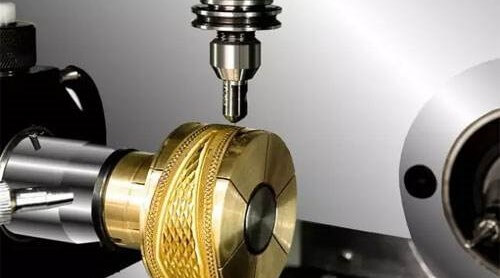CNC machining is an important manufacturing technique in many industries including automotive, aerospace, and medical. This process is automated and produces accurate and high-quality parts. The machine can run for hours which makes it very scalable. However, beneath the surface of its benefits lies its potential for generating waste.
Because of how it operates, CNC machining has some waste-related challenges. Whether you are new to manufacturing or have been in the sector for years, it is important to understand the types of waste CNC machining generates and ways to minimize them. Read on to find out all there is to know to avoid the waste the CNC machining process produces.
Is CNC Machining Wasteful
The answer to this question is an undebatable yes. CNC machining, like every other manufacturing technique, has the potential to generate waste. CNC machining is a subtractive process that involves cutting away excess material gradually to get the final part. Hence, you will generate a significant amount of waste in terms of chips and shaving. Note that it is possible to recycle some of this waste. However, when compared to the additive manufacturing technique that involves building the part in layers to make a whole, CNC machining may be considered wasteful.
Six Types of Waste in CNC Machining
There are different categories of waste in CNC machining. It is important to understand the following types of waste to identify areas for improvement.
Material Waste
Material waste is one of the most significant types of waste because it directly increases production expenses. It refers to everything from excessive material removal to defective parts. Though CNC machining works by cutting away material, there are instances where the tool may remove more than necessary. This can be due to programming errors, poorly optimized tool paths, or using a large stock as the starting material. Furthermore, you can also incur material waste when the final parts are defective and not usable.
Energy Waste
There can also be cases of energy waste. It happens when you do not use electrical energy or other forms of energy efficiently. Waste can occur when you use larger machines than required for a small project. Additionally, it is also a result of operating the machine at a higher power without a proportional increase in productivity. Furthermore, suboptimal tool paths increases energy consumption. Energy waste impacts the environment negatively and reduces the lifespan of the CNC machine.
Tooling Waste
Tooling waste is another form of waste you can encounter during CNC machining. It can be a result of improper tool selection, inadequate usage, and poor maintenance. Many factors including using unoptimized parameters or cutting with the wrong type and size of tool can lead to excessive tool wear. You can also experience tool breakage with time. Tool reakage is a form of waste as it can cause damage to the workpiece and increase the cost of repairs.
Inventory Waste
Inventory waste occurs when you mismanage the raw materials and finished products. Overstocking of metal and plastic raw materials increases the risk of degradation. It becomes worse if you no longer need that particular material as a result of process updates or design changes. You may have to discard such material or sell it below cost price. Furthermore, overproduction is also a waste. The excess parts you manufacture can become obsolete with time.
Consumable Waste
Consumables in this setting refer to the coolants, lubricants, and other cutting fluids you use during CNC machining. Cutting the workpiece with more than required fluids is a waste especially if there are no added advantages. This can happen if you do not properly adjust the flow rate or if there are leaks in the delivery system. Furthermore, using the wrong fluid type or a higher concentration is also an issue. For example, employing a water-based coolant instead of an oil-based one can result in a higher operating cost and waste.
Time Waste
Though underrated, time waste is an important form of CNC machining waste. It occurs when you do not efficiently use time in various stages of product development. This includes time associated with setting up, operation, and logistics. Extended setup time and frequent changeovers can lead to a waste of time. You can channel that same time to other productive operations. The machine and operator’s idle time also counts. The time spent when one is not actively working adds to the total machining waste.
How to Avoid Waste in CNC Machining
To avoid waste in CNC machining, you have to implement various strategies to minimize the different forms of waste. Let’s look at a comprehensive approach to how to reduce waste and increase production efficiency
Optimize DFM (Design for Manufacturability) Analysis
A good way to prevent material waste in CNC machining is to evaluate design choices and avoid unnecessary complexities. By simplifying designs and machining only features needed for functionality, you reduce the number of operations needed. This limits the amount of material you have to remove to create the final part, thus lowering waste.
Enhance Process Efficiency
You can also reduce waste by optimizing cutting parameters and improving tool path strategies. Carefully adjust the cutting speed, feed rate, and depth of cut based on the properties of the workpiece. Furthermore, you should also use efficient tool paths and reduce unnecessary movement. All these help to reduce the number of passes, and minimize tool wear and overall machining time.
Implement Efficient Inventory Management
Another way to avoid CNC machining waste is to implement efficient inventory management. It involves using strategies like just-in-time inventory by ordering materials only when you need them. You can also apply ABC analysis by grouping inventory based on how important they are. By implementing these strategies, you reduce waste associated with overstocking and spoilage.
Improve Maintenance Practices
Regular maintenance and calibration of your machines and tools can also help reduce waste. Before any operation, make sure you check and adjust the tools so they produce accurate cuts. Furthermore, ensure that the machine components are accurately positioned. This approach helps to reduce the production of defective parts caused by misalignment or tool wear. Additionally, calibrated tools minimize the risk of excessive material removal and scrap rate.
Enhance Quality Control
Implementing and using important quality control measures will help prevent waste in CNC machining. Effective quality control practices reduce scrap and defective parts that may need to be reworked. Key quality control strategies involve checking the state of the products during production rather than waiting till the end. It also entails using sophisticated coordinate measuring machines to check for the parts’ dimensions before they get to the end users.
Conclusion
The CNC machining process begins with a block of material that is cut away till you get the end product. For this reason, this technique generates a significant amount of waste when compared to 3D printing and casting operations. Furthermore, CNC machining waste can also be a result of using higher than necessary energy, not optimizing the cutting parameters, and using worn-out tools. To avoid waste, it is important to optimize DFM analysis, implement efficient inventory control management, and improve maintenance practices. Another way to prevent waste is to employ Zintilon’s CNC machining services to reduce costs and promote sustainability.
Keep an eye for more news & updates on TimesAnalysis!



